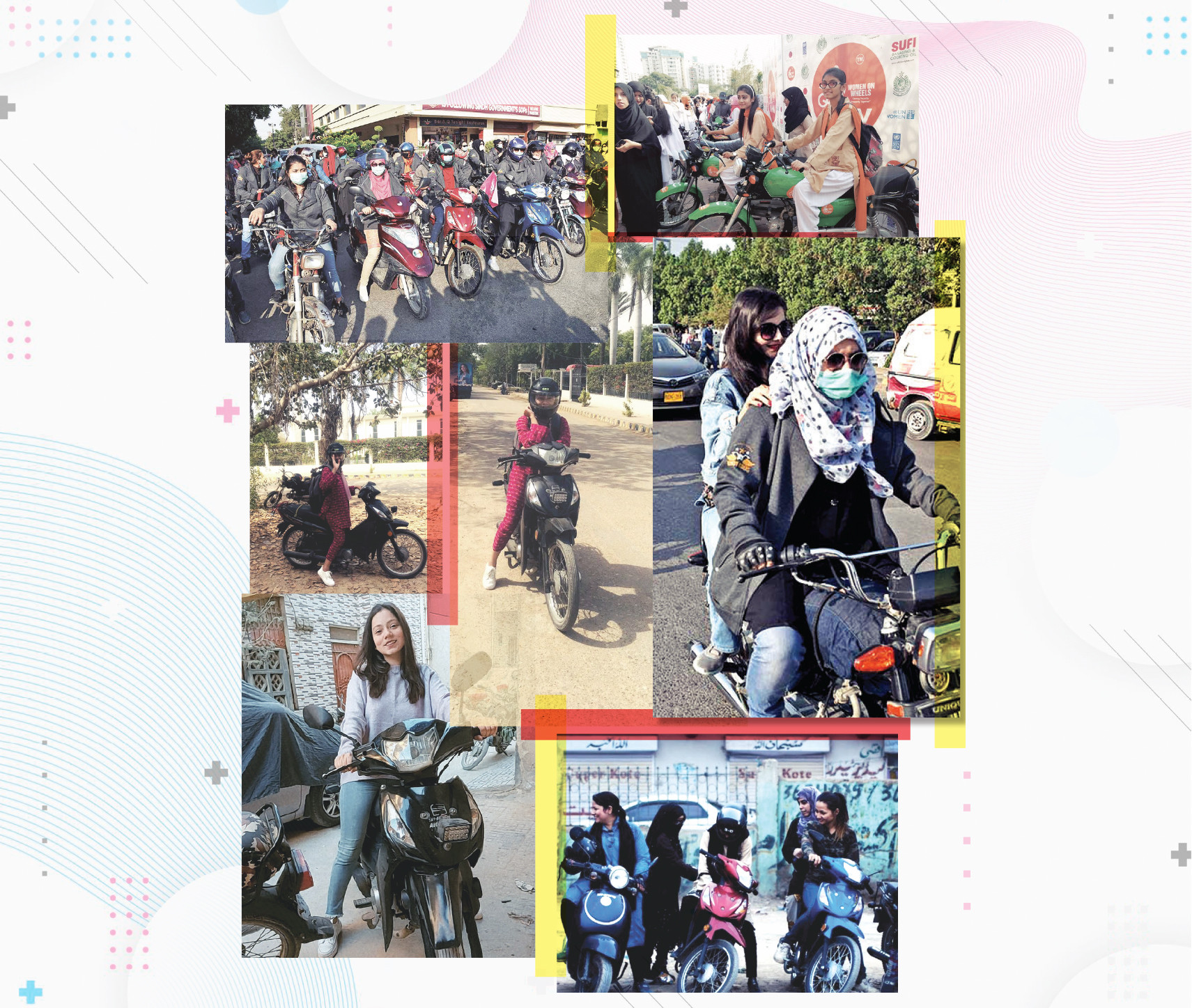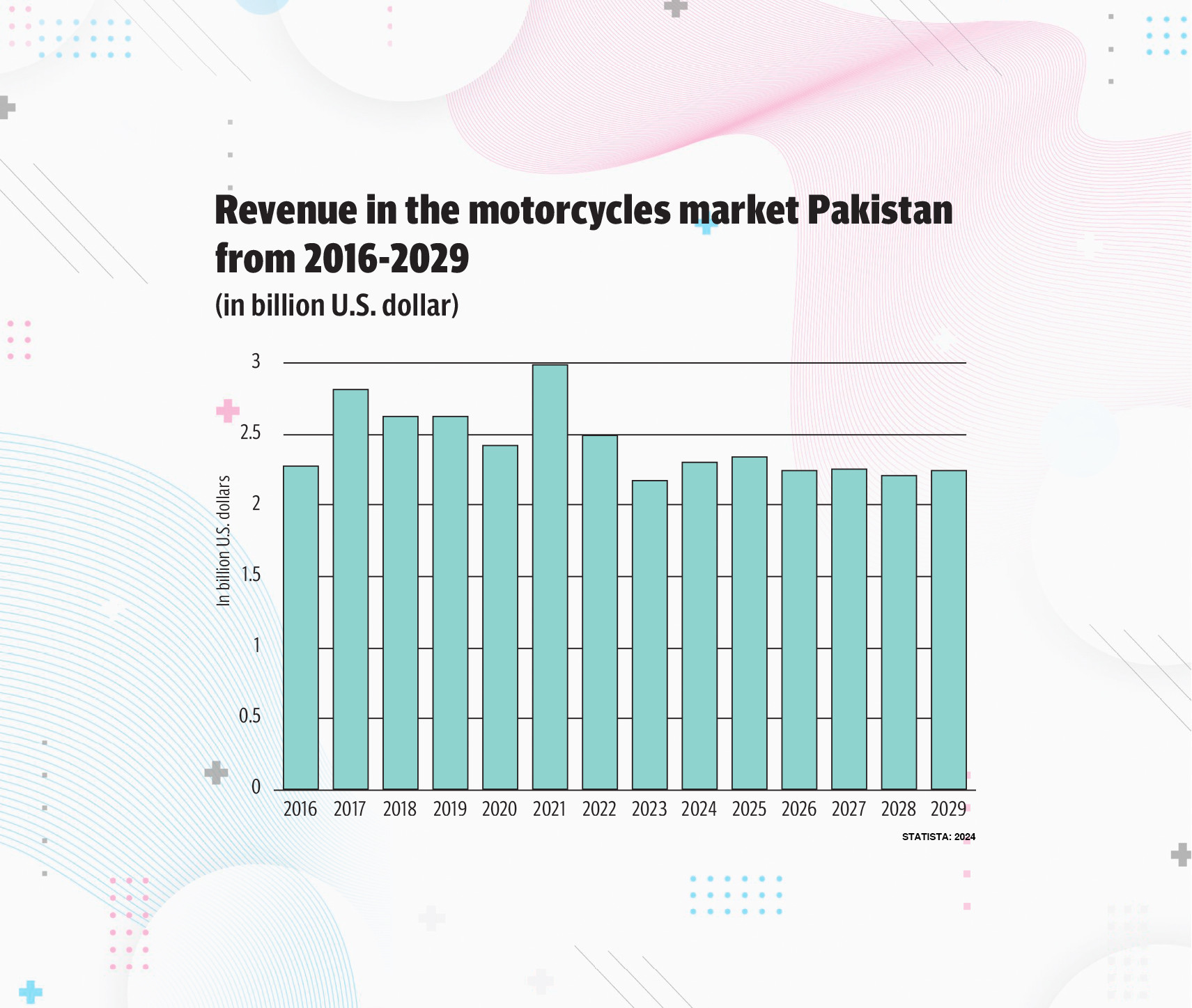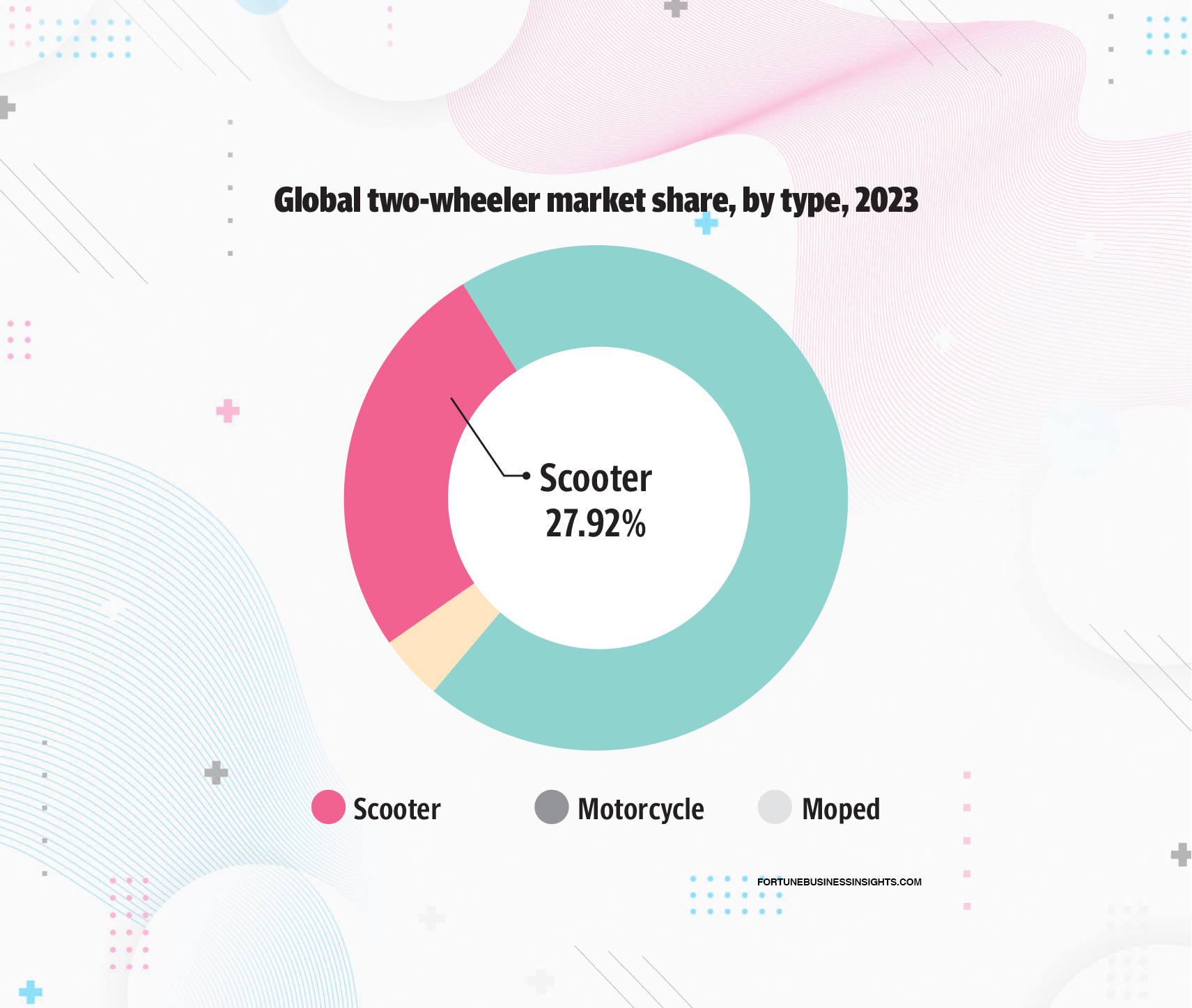It would take Azmeena Arif at least an hour and a half each morning to get to her university located in Karachi’s Defence area. She would head out early from her house in Malir and change two buses along the route to finally get to the campus. A student of BS computer science, Arif decided to finally buy herself a motorbike when a motorcycle company set up a camp in her university.
“Around a year ago, I heard girls talking about the scooter camp in the main courtyard on the college campus. I went to get some information and found out they were teaching girls to drive and also offering installment plans to motivate girls to purchase a scooter. I took a pamphlet, filled out a form and went home,” she told The Express Tribune.
The third-year college student, after discussing with her parents, finalised the purchase and got her motorcycle within a week. This was a golden opportunity, which changed Arif’s life as a commuter. It now reduced her travel time from 1.5 hour to 25 minutes.
In three weeks’ time, she got a handle on riding her new motorcycle and since then she has been a woman on wheels. “The problem with buses is not just the travel time. There are so many pickpocketing incidents aboard buses. Four of my friends got their mobile phones stolen,” Arif pointed out.

Women who go out to work or study face everyday issues when juggling public transport like buses, or paying a higher fare than usual for a rickshaw when it is too late to catch a bus – or worse not being able to find any ride home on time. Given the inflation, many are unable to afford a car. The next best way to commute independently and easily is a motorcycle, a comparatively much cheaper vehicle to purchase and more cost-effective in maintenance in terms of fuel expense, and easier to manoeuvre through heavy traffic.
Every day, Fardeen Saleem would fork over between Rs400 and Rs500 on transport cost to and from her office. Half the time, she also had to rely on her father or brother to pick and drop her as her office was nearby her home. It was easier but then again it felt inconvenient for them and Saleem as well. “I thought of getting a scooter many times but every time I thought it would be difficult,” Saleem shared why she was hesitant to buy her own vehicle. “People stare at women driving motorbikes out there and even make fun of them. And how would I manage if the tire gets punctured or I run out of petrol?” She shared how all these thoughts stopped her but then one day when her dad was unwell, she realised that he needed rest and help with errands. The very next day, she went out and bought a scooter.
Wearing sneakers, donning a helmet, Saleem is all ready to leave for her office in the morning today. “I bought this scooter in October last year but started driving it on the roads somewhere in February or March this year. I was learning to drive well so that I don’t get myself killed in a road accident,” shared the cautious 24-year-old who works in a private bank.
“At first it was difficult as I had to schedule my timing with my brother or father to teach me how to ride a bike. My father was impatient while I was fearful as a learner. My brother taught me better,” she said.
Manoeuvring a bike on the roads in Karachi is dangerous enough and being a woman on a motorbike makes it even more so. “Once I left from my office for home and was waiting at a signal to turn green, when a rickshaw driver hit my scooter from the back causing my bike to fall with me. It led to a few injuries. The only thing I could do was to call my brother for help. A few passers-by did come to my help. The accident also made me realise that I had to be stronger and make my space on the roads,” Saleem said.
Her experience has been more positive than she had anticipated before getting a motorcycle. “The overall attitude of the traffic police and majority of the people on the roads is good, be it helping me with directions or just acknowledging me with a smile or a thumbs-up when they see me at traffic signals,” Saleem shared.
Seeing Saleem driving around on her scooter to run her daily errands has encouraged many of her girlfriends to get themselves motorcycles. Getting your personal transport not only saves time and money in the long term but one also need not rely on anyone else to get you home safely.

Tapping a new market
Buying a motorbike in a city like Karachi is not a big deal or difficult for to promote the trend and help empower women and make commuting easier for them, the government and private sector both are doing their part by introducing schemes, offering easy installments plans and training camps on how to ride a bike, teaching safety precautions, and licensing options.
The number of female buyers has shown an upward trend, as has the number of men buying motorcycles for their daughters or sisters. Akram Shah sells motorcycles on Akbar Road in Saddar. Speaking to The Express Tribune, he said, “Five years ago, there were maybe two or three customers every three months who would buy a girls’ scooter. Now there are at least four or five customers every month. The demand has increased but so have the prices due to inflation.”

Shah, 50, has been in the business since he was 20. He feels immense gladness to see independent young women driving motorcycles. “Many come to buy new motorbikes but when they find out the prices, they look for used motorcycles – which are a year or two old – which cost 75 percent of the price as compared to brand new ones,” he said, adding that for females scooters are mostly in the 70 CC category with more or less similar features. A women’s’ motorcycle in used condition is priced at 80,000-130,000 rupees depending on the condition and company make while a new one comes at a starting price of 180,000-250,000 rupees.
Shah facilitates female customers with getting their vehicles registered and as he has contacts with licence officers as well, he guides the women in obtaining their learner’s licences. “In a city as big and as unmanaged as Karachi, this is the need of the hour. Where will these girls go and until when will they keep taking help from others? Their fathers and brothers are also burdened with the daily grind of work and responsibilities, so it is better that women drive to their workplaces themselves,” he said. Shah has two daughters of his own and one of them rides a bike.
Sharing her experience, Saleem said that she has learnt to overcome her self-consciousness when riding her scooter on the roads. She has also taught herself to ignore the looks and comments that she is subjected to. When men on motorcycles honk at her without any reason or speed past her while commenting things like ‘Go and learn to drive’, she pays them no heed now. “Such comments used to upset me but now I have become thick-skinned and I don’t bother because I am a taxpayer and I have the same road rights as someone in a car or any other men on a bike,” she said confidently.
The women on wheels have gained freedom of movement and no longer need to envy their male counterparts or rely on them. “When I started university, I used to see two, three boys on a bike coming and going easily. Now I also pick up my class fellow who lives nearby,” Arif said.

A norm in the region
Riding a bike for women is not new or unusual, and this trend has been adopted by neighboring countries like India, Bangladesh, and Sri Lanka. Women in these countries have been riding bikes and commuting for work and study purposes. As the market and demand have increased, community acceptance has also seen a significant change.
India has the second-largest motorbike market worldwide, after China. According to the Society of Indian Automobile Manufacturers, an average of 13.4 million two-wheelers (including motorbikes, scooters, and mopeds) were sold annually, with sales increasing by 14 per cent each year over the past decade. Motorcycle sales accounted for the majority of this growth. The total number of motorcycle riders in India is impossible to calculate, but specialists at Autocar India estimate it to be well over 350 million. Although women make up to one-third of scooter riders, they are believed to constitute less than 5 per cent of major motorbike riders.
While Pakistani people have learned and adopted a lot from changing trends and fashions in our neighboring countries, many have also retained the same traditional views and ideologies over many things, women and biking being one of them. Speaking on the subject, Saleem said, "After watching women easily riding scooters and seeing so many advertisements on TV, I believe these factors have influenced women in Pakistan to opt for such options. In our childhood, we consumed a lot of Indian TV channels. This shows that countries do influence each other because most values and cultural trends are similar across the border."

Unlike in Pakistan, there are several bike riding clubs in India where women can join the community, learn to ride, and have a safe space to overcome the challenges they face. Riding a bike can be challenging at first, but with support and help, one can gain the confidence to incorporate biking into their daily routine. Beyond support, the design and comfort of the bike are crucial. Women's bike frames differ from men's, with shorter top tubes and lower frame heights, which are more suited to the feminine body type. It is critical to realise that seat length is also important in the design. For a preliminary indication, measure the distance according to your height. Next, locate the frame size that fits you by consulting the size guide of the women's bike model you wish to buy.
With changing markets, companies have started introducing different types of bikes, from battery-operated to self-start models. “The prices vary depending on the bike type. Most girls who are now opting for bikes prefer those with a button start, which is easier to operate than traditional motorbikes for men,” said Shah, who believes the market will change and prices will rise in the next three years, depending on demand.
If we closely examine the consumers, most are girls aged between 18 and 25 years who find it difficult to manage daily commuting. Women riding bikes is surely a game-changer. “Girls riding bikes will bring about traffic issues as road congestion will increase, and other riders will have to make space for the new riders. It can be frustrating for some, but everyone has the same right to be on the road,” said Shah, who thinks this trend is influenced by India but was also necessary due to the absence of a proper transportation system for these consumers.
